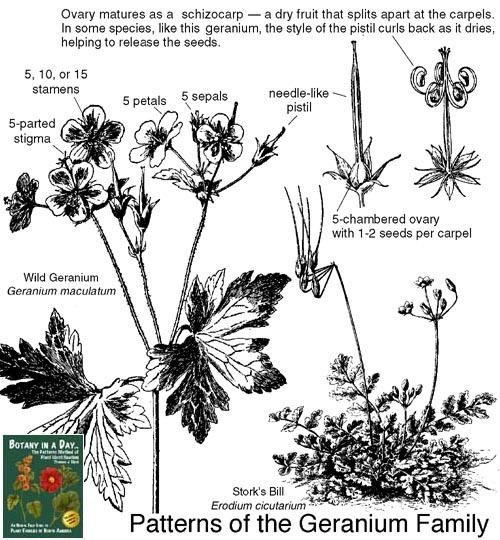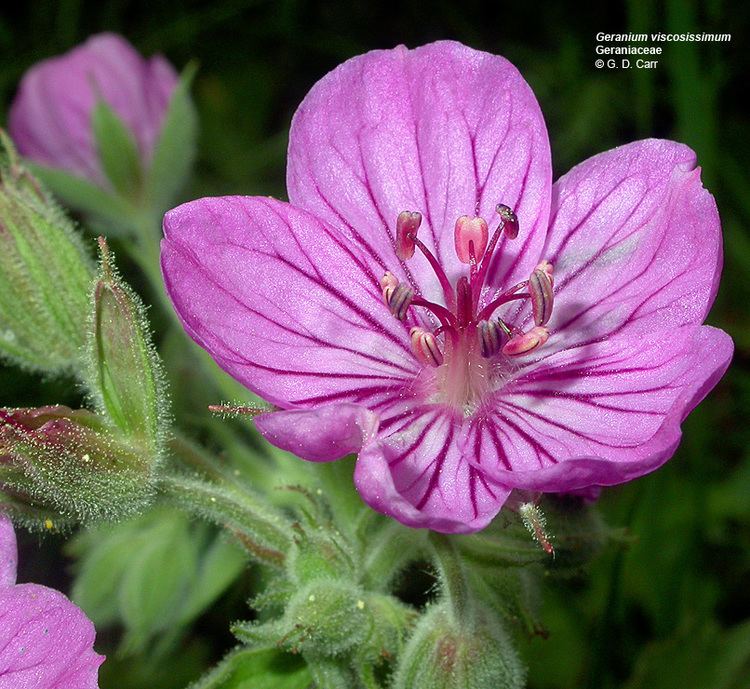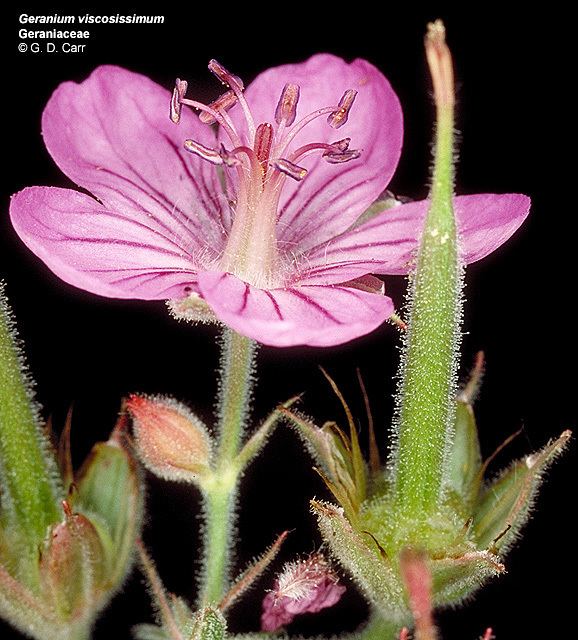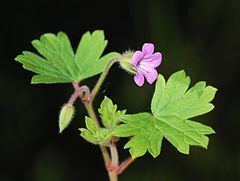Scientific name Geraniaceae Rank Family | ||
 | ||
Lower classifications Crane's‑bill, Geraniums, Erodium | ||
Filbert scented geranium pelargorium shottesham geraniaceae
Geraniaceae is a family of flowering plants placed in the order Geraniales. The family name is derived from the genus Geranium. The family includes both the genus Geranium (the cranesbills, or true geraniums) and the garden plants called geraniums, which modern botany classifies as genus Pelargonium, along with other related genera.
Contents
- Filbert scented geranium pelargorium shottesham geraniaceae
- Description
- Taxonomy
- Distribution and habitat
- References
The family comprises 830 species in five to seven genera. Numerically, the most important genera are Geranium (430 species), Pelargonium (280 species) and Erodium (80 species).

Description
Geraniaceae are herbs or subshrubs. The Sarcocaulon are succulent, but other members of the family generally are not.
Leaves are usually lobed or otherwise divided, sometimes peltate, opposite or alternate and usually have stipules.

The flowers are generally regular, or symmetrical. They are hermaphrodite, actinomorphic (radially symmetrical, like in Geranium) or slightly zygomorphic (with a bilateral symmetry, like in Pelargonium). The calyx and the corolla are both pentamerous (with five lobes), petals are free while sepals are connate or united at the base. The androecium consists in two whorls of five stamens each, some of which can be unfertile; the pistil consists of five (less commonly three) merged carpels. The linear stigmas are free, and the ovary is superior. Flowers are usually grouped in cymes (e.g. in Geranium), umbels (e.g. in Pelargonium) or, more rarely, spikes.
Geraniaceae are normally pollinated by insects, but self-pollination is not uncommon.

The fruit is a unique schizocarp made of five (or three) achenes, in the lower part the achenes are inside the calyx, while the upper part (the stylar beak) is the style of the flower, looking like a kind of long beak over the achenes. When the fruit is mature the style breaks into five (or three) hygroscopically active (ready to absorb water) bristles that curl, causing the achenes to be released.
Taxonomy

Geraniaceae, with Francoaceae are the two families included in the order Geraniales under the Angiosperm Phylogeny Group (APG) classification (APG IV). There has been some uncertainty in the number of genera to be included. Stevens gives seven genera listed here, while Christenhusz and Byng state five genera.
Stevens also lists four synonyms of Geranium: Geraniopsis Chrtek Neurophyllodes (A. Gray) O. Degener Robertianum Picard Robertiella
Hypseocharis, with between one and three species, which comes from the south-west Andean region of South America, is considered the sister to the rest of the family. Some authors separate Hyspeocharis as a monogeneric family Hypseocharitaceae, while older sources placed it in the Oxalidaceae. The genus Rhynchotheca has also been separated into the Vivianiaceae.
The Geraniaceae have a number of genetic features unique amongst angiosperms, including highly rearranged plastid genomes differing in gene content, order and expansion of the inverted repeat.
Distribution and habitat
Most species are found in temperate or warm temperate regions, though some are tropical. Pelargonium has its centre for diversity in the Cape region in South Africa, where there is a striking vegetative and floral variation.
